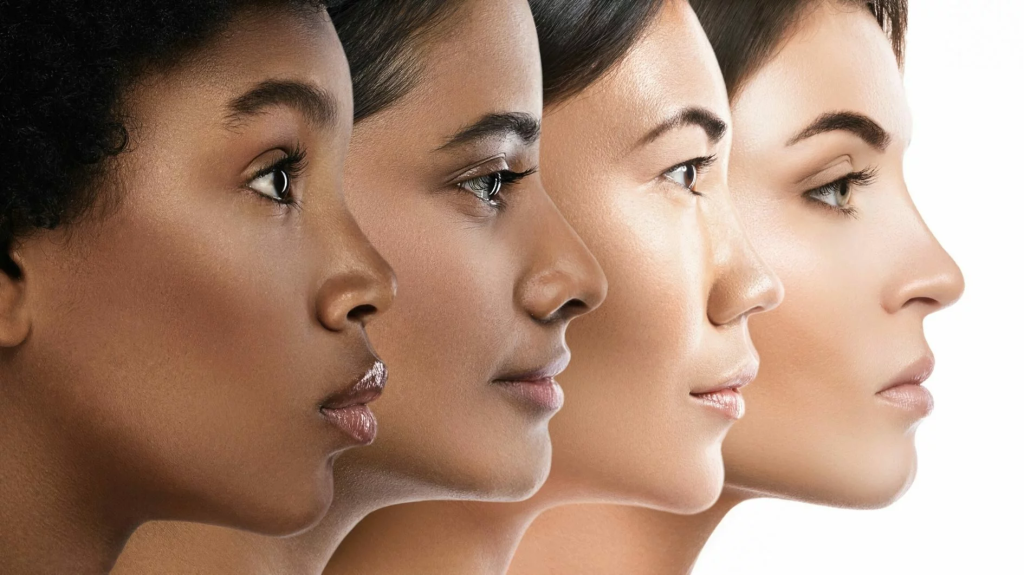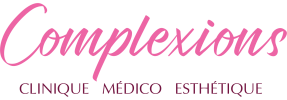Understanding Safety in Medical Aesthetic Clinics

Be sure to check out our Medical Aesthetics Guide1 by Clinique Médico Esthétique Complexions.
Ready to unlock Your Radiant Skin with a Free Aesthetic Consultation?
Ultimate Medical Aesthetics Guide: Safety First – Understanding Safety in Medical Aesthetic Clinics
Introduction to Understanding Safety in Medical Aesthetic Clinics
The popularity of medical aesthetics has skyrocketed over the past few decades, with more people seeking non-surgical treatments to enhance their appearance. From Botox and dermal fillers to laser treatments and chemical peels, these procedures offer effective solutions for a variety of cosmetic concerns. However, as demand for these services grows, so does the importance of safety in medical aesthetic clinics. Understanding the safety protocols and standards in place is crucial for anyone considering such treatments.
This comprehensive guide delves into the key aspects of Understanding Safety in Medical Aesthetic Clinics, helping you make informed decisions and ensuring that your health and well-being are prioritized.
Why Safety is Crucial in Understanding Safety in Medical Aesthetic Clinics
Minimizing Risk of Complications
Medical aesthetic procedures, while generally safe, are not without risks. Complications can arise from poor technique, unsterile conditions, or the use of substandard products. These risks can include infections, allergic reactions, scarring, and even more serious issues like vascular occlusion with dermal fillers. Ensuring that the clinic you choose adheres to stringent safety protocols minimizes these risks, protecting your health and ensuring a positive outcome.
Understanding Safety in Medical Aesthetic Clinics
Ensuring Effective Results
Safety and effectiveness go hand in hand in medical aesthetics. A clinic that prioritizes safety is more likely to deliver consistent and effective results. This is because safety protocols ensure that procedures are performed correctly, with high-quality products and equipment, and in an environment that supports optimal outcomes. Patients can have greater confidence that their desired aesthetic results will be achieved without unnecessary complications or setbacks.
Understanding Safety in Medical Aesthetic Clinics
Building Trust and Confidence
When it comes to medical aesthetics, trust between the patient and practitioner is paramount. Clinics that demonstrate a strong commitment to safety foster trust and confidence in their patients. This trust is essential not only for the patient’s peace of mind but also for the clinic’s reputation. A clinic known for its safety standards is more likely to attract and retain clients, as patients feel assured that their well-being is the clinic’s top priority.

Key Aspects of Understanding Safety in Medical Aesthetic Clinics
Understanding Safety in Medical Aesthetic Clinics
1. Qualified and Experienced Practitioners
One of the most critical aspects of safety in medical aesthetic clinics is the qualifications and experience of the practitioners. A qualified practitioner should have the necessary medical training, certifications, and a deep understanding of facial anatomy and the specific procedures they are performing.
Understanding Safety in Medical Aesthetic Clinics
What to Look For:
- Board Certification: Ensure that the practitioner is board-certified in a relevant medical specialty, such as dermatology, plastic surgery, or aesthetic medicine. This certification indicates that they have undergone rigorous training and adhere to high standards of care.
- Experience: Ask how many years the practitioner has been performing the specific treatment you are interested in and how many procedures they have completed. Experience often correlates with expertise and the ability to handle complications should they arise.
- Continued Education: The field of medical aesthetics is constantly evolving. A practitioner who engages in ongoing education and training is more likely to be up-to-date with the latest techniques, products, and safety protocols.
Understanding Safety in Medical Aesthetic Clinics
2. Sterile Environment and Equipment
Maintaining a sterile environment is essential in preventing infections and other complications during medical aesthetic procedures. This includes the cleanliness of the clinic, the sterilization of equipment, and the use of disposable tools where appropriate.
Understanding Safety in Medical Aesthetic Clinics
What to Look For:
- Clinic Cleanliness: The clinic should be clean, well-maintained, and organized. Treatment rooms should be spotless, with all surfaces regularly disinfected.
- Sterilization Practices: Equipment used in procedures, such as needles, syringes, and laser devices, must be properly sterilized between patients. Ask the clinic about their sterilization protocols and whether they follow industry standards.
- Disposable Tools: Where possible, clinics should use disposable tools to further minimize the risk of cross-contamination. For example, needles and syringes should be single-use and discarded after each procedure.

Understanding Safety in Medical Aesthetic Clinics
3. High-Quality Products and Equipment
The products and equipment used in medical aesthetic procedures play a significant role in safety and effectiveness. High-quality, FDA-approved products reduce the risk of adverse reactions and complications, while state-of-the-art equipment ensures precise and safe treatment.Understanding Safety in Medical Aesthetic Clinics
What to Look For:
- FDA-Approved Products: Ask the clinic about the products they use, such as dermal fillers, Botox, or skincare products, and ensure they are FDA-approved or certified by relevant regulatory bodies in your country.
- Up-to-Date Equipment: The clinic should use the latest technology and equipment, which should be regularly maintained and serviced to ensure optimal performance and safety.
- Product Sourcing: Inquire about where the clinic sources its products. Reputable clinics purchase directly from manufacturers or authorized distributors, ensuring the authenticity and quality of the products used.
Understanding Safety in Medical Aesthetic Clinics
4. Comprehensive Patient Consultations
Safety in medical aesthetics begins with a thorough patient consultation. During this consultation, the practitioner should assess your medical history, discuss your goals, and explain the potential risks and benefits of the procedure. This process ensures that you are a suitable candidate for the treatment and that you have realistic expectations.What to Look For:
- Medical History Review: The practitioner should ask about your medical history, including any allergies, medications, or previous procedures. This information is crucial in identifying potential risks or contraindications.
- Informed Consent: Before any procedure, the clinic should provide you with detailed information about the treatment, including potential risks, benefits, and alternative options. You should be given ample time to ask questions and should sign an informed consent form only after you fully understand the procedure.
- Personalized Treatment Plan: The consultation should result in a personalized treatment plan that aligns with your goals and takes into account your unique skin type, concerns, and medical history.

Understanding Safety in Medical Aesthetic Clinics
5. Post-Treatment Care and Follow-Up
Proper aftercare is essential for a safe recovery and the success of the treatment. A reputable clinic will provide clear aftercare instructions and schedule follow-up appointments to monitor your progress and address any concerns.
What to Look For:
- Clear Aftercare Instructions: The clinic should provide written aftercare instructions that detail how to care for your skin or treatment area, what to avoid, and signs of potential complications to watch for.
- Follow-Up Appointments: A follow-up appointment should be scheduled to assess the results of the treatment and ensure there are no complications. This is also an opportunity to discuss any concerns or ask further questions.
- Accessibility: The clinic should be easily reachable if you have any concerns or complications after the procedure. This includes having a clear line of communication with your practitioner for any post-treatment questions or emergencies.
Understanding Safety in Medical Aesthetic Clinics
6. Ethical Practices and Transparency
Ethical practices are a cornerstone of safety in medical aesthetics. A reputable clinic will always prioritize the patient’s well-being over profit, providing honest advice and avoiding unnecessary treatments.
What to Look For:
- Transparent Pricing: The clinic should provide clear, upfront pricing for all procedures, with no hidden fees. They should also be transparent about what is included in the cost, such as follow-up appointments or aftercare products.
- No Pressure Sales Tactics: Be wary of clinics that pressure you into additional treatments or upsell unnecessary services. A reputable clinic will recommend procedures based on your needs and goals, not on sales targets.
- Honest Assessments: The practitioner should provide an honest assessment of what the procedure can achieve and whether it is the best option for you. If they believe a different treatment would be more effective or if they feel the procedure is unnecessary, they should communicate this openly.
How to Evaluate a Clinic’s Commitment to Safety
Research and Reviews
Start by researching the clinic online. Look for reviews from previous patients, paying close attention to their experiences with safety, cleanliness, and results. Check the clinic’s website for information on their safety protocols, practitioner qualifications, and the products they use.
Ask Questions During the Consultation
Don’t hesitate to ask questions during your consultation. Inquire about the clinic’s sterilization practices, the qualifications of the practitioner, the products they use, and their approach to aftercare. A reputable clinic will be transparent and forthcoming with this information.
Visit the Clinic in Person
If possible, visit the clinic in person before scheduling a procedure. This allows you to observe the cleanliness of the facility, the professionalism of the staff, and the overall atmosphere. Pay attention to how the staff interacts with patients and whether the clinic appears organized and well-maintained.
Safety should be your top priority when choosing a clinic for treatments like chemical peels or fillers. To learn more about the benefits and risks associated with these procedures, check out Understanding Botox and Dermal Fillers – Benefits, Risks, and Results.

Ready to unlock Your Radiant Skin with a Free Aesthetic Consultation?
Conclusion
Safety should be the top priority when choosing a medical aesthetic clinic. By ensuring that the clinic you select adheres to the highest safety standards, you can protect your health, achieve the best possible results, and enjoy a positive experience. From qualified practitioners and sterile environments to high-quality products and ethical practices, every aspect of the clinic’s operations should reflect a commitment to patient safety.
As you embark on your aesthetic journey, take the time to thoroughly research and evaluate potential clinics. Ask questions, read reviews, and visit the clinic in person to ensure it meets your expectations and safety requirements. By putting safety first, you can confidently pursue your aesthetic goals, knowing that you are in capable and professional hands.
MEDICAL AESTHETICS GUIDE: REFERENCES
1. American Society for Aesthetic Plastic Surgery (ASAPS)- Leading organization dedicated to advancing the field of aesthetic plastic surgery, offering resources for patients and professionals.
- https://www.surgery.org/
- Comprehensive resource for dermatology, providing information on skin care, conditions, and the latest treatments.
- https://www.aad.org/
- Trusted platform where patients can find reviews, cost information, and expert advice on cosmetic treatments.
- https://www.realself.com/
- Accredited board providing certification and education to ensure the highest standards in cosmetic surgery.
- https://www.americanboardcosmeticsurgery.org/
- Global leader in aesthetic plastic surgery education and practice, representing over 100 countries.
- https://www.isaps.org/
- UK’s leading authority in aesthetic plastic surgery, providing safety information and professional guidelines.
- https://baaps.org.uk/
- Extensive resource for dermatology professionals, featuring the latest news, research, and clinical guidelines.
- Website Link: https://www.medscape.com/dermatology
- Peer-reviewed journal providing the latest research and advancements in cosmetic dermatology.
- https://onlinelibrary.wiley.com/journal/14732165
- Esteemed medical journal covering all aspects of plastic and reconstructive surgery, featuring groundbreaking research.
- https://journals.lww.com/plasreconsurg/pages/default.aspx
- UK-based organization providing evidence-based guidance and standards for health and care, including medical aesthetics.
- https://www.nice.org.uk/
1 For comprehensive details on medical aesthetics Laval, refer to the Ultimate Medical Aesthetics Guide .
2 Additional resources and detailed guidance can be found in the Ultimate Medical Aesthetics Guide
Contact us to receive a free laser hair removal consultation or call us (514) 651-CMEC (2632)
Table of Contents
Medical Aesthetics Guide
- Understanding Botox & Dermal Fillers
- Botox and Dermal Fillers – Benefits, Risks, and Results
- Learn More About Botox & Dermal Fillers
- Guide to Lip Augmentation
- Skin Rejuvenation Techniques
- In-Depth Guide to Chemical Peels – Benefits, Types, and Aftercare
- The Importance of Choosing a Qualified Aesthetic Practitioner
- How to Evaluate a Clinic’s Reputation
- Personalized Skincare Consultations
- Understanding Safety in Medical Aesthetic Clinics
- Navigating Medical Aesthetic Regulations
- What to Know About Informed Consent
- Post Treatment Care Guide
Ready to unlock Your Radiant Skin with a Free Aesthetic Consultation?

